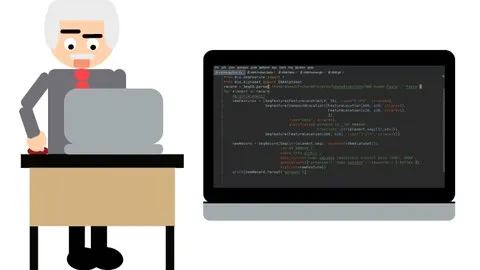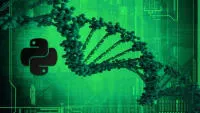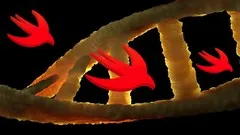
Finding Hidden Messages in DNA (Bioinformatics I) 
Discover the power of computing in modern biology with this top 50 MOOC of all time! Join us on the frontier of bioinformatics to look for hidden messages in DNA and understand the complex language of DNA. Learn to apply randomized algorithms and existing software tools to find recurring biological motifs. Sign up now and start your journey into the world of bioinformatics! ▼
ADVERTISEMENT
Course Feature
![]() Cost:
Cost:
Free
![]() Provider:
Provider:
Coursera
![]() Certificate:
Certificate:
Paid Certification
![]() Language:
Language:
English
![]() Start Date:
Start Date:
4th Sep, 2023
Course Overview
❗The content presented here is sourced directly from Coursera platform. For comprehensive course details, including enrollment information, simply click on the 'Go to class' link on our website.
Updated in [June 30th, 2023]
Finding Hidden Messages in DNA (Bioinformatics I) is a course that explores the power of computing in modern biology. Students will learn how to look for hidden messages in DNA without ever needing to put on a lab coat. In the first half of the course, students will investigate DNA replication and ask the question, where in the genome does DNA replication begin? In the second half of the course, students will examine a different biological question, when they ask which DNA patterns play the role of molecular clocks. Finally, students will apply existing software tools to find recurring biological motifs within genes that are responsible for helping Mycobacterium tuberculosis go "dormant" within a host for many years before causing an active infection. This course has been named a top 50 MOOC of all time by Class Central.
[Applications]
The application of this course can be seen in the field of bioinformatics, where the knowledge gained can be used to analyze and interpret DNA sequences. This can be used to identify patterns and motifs in the genome, as well as to understand the role of DNA in various biological processes. Additionally, the course can be used to develop and apply software tools to identify recurring biological motifs in genes. This can be used to gain insight into the behavior of organisms, such as the ability of Mycobacterium tuberculosis to remain dormant in a host for many years before causing an active infection.
[Career Paths]
The career path recommended to learners of this course is Bioinformatics. Bioinformatics is a field of science that combines biology, computer science, and information technology to analyze and interpret biological data. It is used to study the structure and function of genes, proteins, and other biological molecules. Bioinformatics professionals use computer algorithms and software to analyze and interpret biological data, such as DNA sequences, protein structures, and gene expression patterns.
A job position in bioinformatics could involve working as a Bioinformatics Analyst, Bioinformatics Scientist, or Bioinformatics Programmer. As a Bioinformatics Analyst, you would be responsible for analyzing and interpreting biological data, such as DNA sequences, protein structures, and gene expression patterns. As a Bioinformatics Scientist, you would be responsible for developing and implementing algorithms and software to analyze and interpret biological data. As a Bioinformatics Programmer, you would be responsible for writing computer programs to analyze and interpret biological data.
The development trend of bioinformatics is towards the use of artificial intelligence (AI) and machine learning (ML) to analyze and interpret biological data. AI and ML are being used to develop algorithms and software that can analyze and interpret biological data more quickly and accurately than ever before. This is leading to the development of new treatments and therapies for diseases, as well as the development of new diagnostic tools.
[Education Paths]
The recommended educational path for learners interested in bioinformatics is to pursue a degree in computer science or a related field such as mathematics, statistics, or biology. This degree should include courses in computer programming, data structures, algorithms, and databases. Additionally, courses in bioinformatics, genetics, and molecular biology should be taken to gain a deeper understanding of the biological concepts and processes being studied.
The development trend for bioinformatics degrees is to focus on the application of computer science and mathematics to solve biological problems. This includes the development of new algorithms and software tools to analyze and interpret biological data. Additionally, the development of new methods for data visualization and machine learning techniques to identify patterns in biological data is becoming increasingly important. As the field of bioinformatics continues to grow, the demand for professionals with the necessary skills and knowledge to work in this field will also increase.
Course Provider

Provider Coursera's Stats at AZClass
Discussion and Reviews
0.0 (Based on 0 reviews)
Explore Similar Online Courses

Free Fingerstyle Guitar Tutorial - Fingerstyle Guitar Mastery: 3 Techniques You Need To Know

QuickBooks Online Essential Training Online Class

Python for Informatics: Exploring Information

Social Network Analysis

Introduction to Systematic Review and Meta-Analysis

The Analytics Edge

DCO042 - Python For Informatics

Causal Diagrams: Draw Your Assumptions Before Your Conclusions

Whole genome sequencing of bacterial genomes - tools and applications

Learn Biopython: Preliminary Step Toward Bioinformatics

Introduction to programming for Bioinformatics with Python


Start your review of Finding Hidden Messages in DNA (Bioinformatics I)